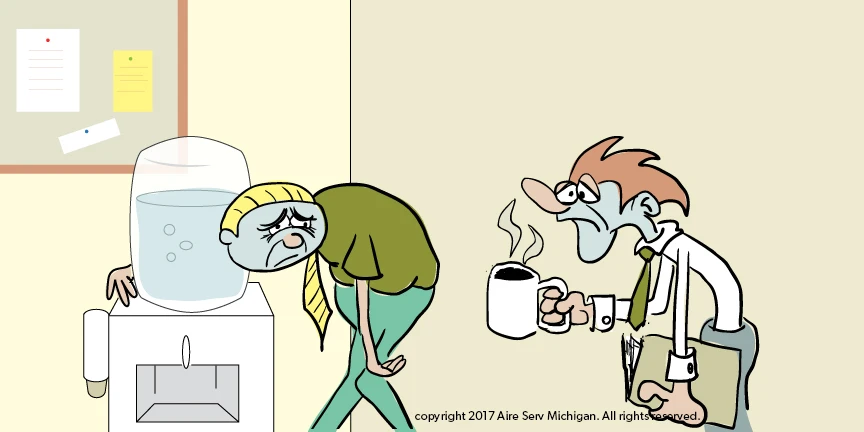
More important than warm or cold, the quality of your indoor air affects the health of every person using that space.
We all notice when we’re too hot or cold indoors at work or at home and adjust the thermostat if necessary. What we don’t notice is whether there is enough oxygen or whether the humidity is high or low. A dull headache and drowsiness may not be due to stress and lack of sleep. It may be what you are, or aren’t, breathing.
The EPA is concerned, “Most Americans spend up to 90% of their time indoors and many spend most of their working hours in an office environment. Studies show that indoor environments sometimes can have levels of pollutants that are actually higher than levels found outside.”
HVAC systems, commercial or residential, are able to monitor and correct all of the possible indoor air quality concerns - when properly maintained and adjusted. Also, seemingly unrelated changes to your indoor environment may affect your air quality. New equipment, additional personnel or building upgrades can and do change the air you’re breathing unless your HVAC system is able to automatically respond.
OSHA defines the following three indoor air quality categories:
Biological Contaminants
Excessive concentrations of bacteria, viruses, fungi (including molds), dust mite allergen, animal dander, and pollen may result from inadequate maintenance and housekeeping, water spills, inadequate humidity control, condensation, or may be brought into the building by occupants, infiltration, or ventilation air.
Proper humidity control and levels are effective in alleviating the majority of these concerns.
Chemical Pollutants and Gases
Emissions from products used in the building (e.g., office equipment; furniture, wall and floor coverings; andcleaning and consumer products) accidental spill of chemicals, and gases such as carbon monoxide and nitrogen dioxide.
Ventilation controls mix fresh outdoor air in with conditioned air to maintain healthy air quality.
Particles
Particles of dust, dirt, or other substances may be drawn into the building from outside and can also be produced by activities that occur in buildings, like sanding wood or drywall, printing, copying, operating equipment, and smoking.
Filtration should be configured to fit specific environments - location and building use.
Building owners and property managers have a moral and legal obligation to ensure healthy conditions for occupants. Regular HVAC system maintenance will address the majority of issues. If it has never been performed, or it’s been a long time since it was done, a documented Indoor Air Quality assessment will identify potential issues - or provide a clean bill of health.
Be sensitive to, and take seriously, recurring health complaints. The people complaining may not be “whiners”, they may be identifying indoor air quality issues before others notice. Pay attention to your “canaries in the coal mine.”

